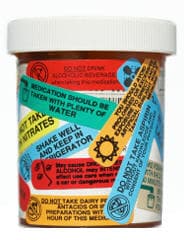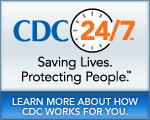Medication Safety Basics
On this Page
Medication Safety is Important
Adverse drug events are harms resulting from the use of medication and include allergic reactions, side effects, overmedication, and medication errors. Adverse drug events are a serious public health problem. It is estimated that:
- 82 percent of American adults take at least one medication and 29 percent take five or more;1
- ADEs cause approximately 1.3 million emergency department visits and 350,000 hospitalizations each year;2
- $3.5 billion is spent on excess medical costs of ADEs annually;3
- More than 40% of costs related to ambulatory (non-hospital) ADEs might be preventable.3
The numbers of adverse drug events is likely to grow due to:
- Development of new medicines
- Discovery of new uses for older medicines
- Aging American population
- Increased use of medicines for disease treatment and prevention
- Expansion of insurance coverage for prescription medicines
Related Links
- Tips to Prevent Poisonings, CDC
- National Action Plan for Adverse Drug Event Preventionexternal icon, Department of Health and Human Services
- Taking Medicinesexternal icon, Agency for Healthcare Research and Quality
- Drug Information for Consumersexternal icon, Food and Drug Administration
- Buying & Using Medicine Safelyexternal icon, Food and Drug Administration
- Drug Safetyexternal icon, National Institutes of Health
- Safe Use of Medicines for Older Adultsexternal icon, National Institutes of Health
- VA Center for Medication Safety (VA MedSAFE)external icon, Department of Veterans Affairs
References
- Slone Epidemiology Center at Boston University. Patterns of medication use in the United States, 2006external icon.
- Shehab N, Lovegrove MC, Geller AI, Rose KO, Weidle NJ, Budnitz DS. US emergency department visits for outpatient adverse drug events, 2013-2014. JAMA 2016;316:2115-25
- Institute of Medicine. Committee on Identifying and Preventing Medication Errors. Preventing Medication Errors, Washington, DC: The National Academies Press 2006.
Page last reviewed: September 28, 2010
Content source: Centers for Disease Control and Prevention

